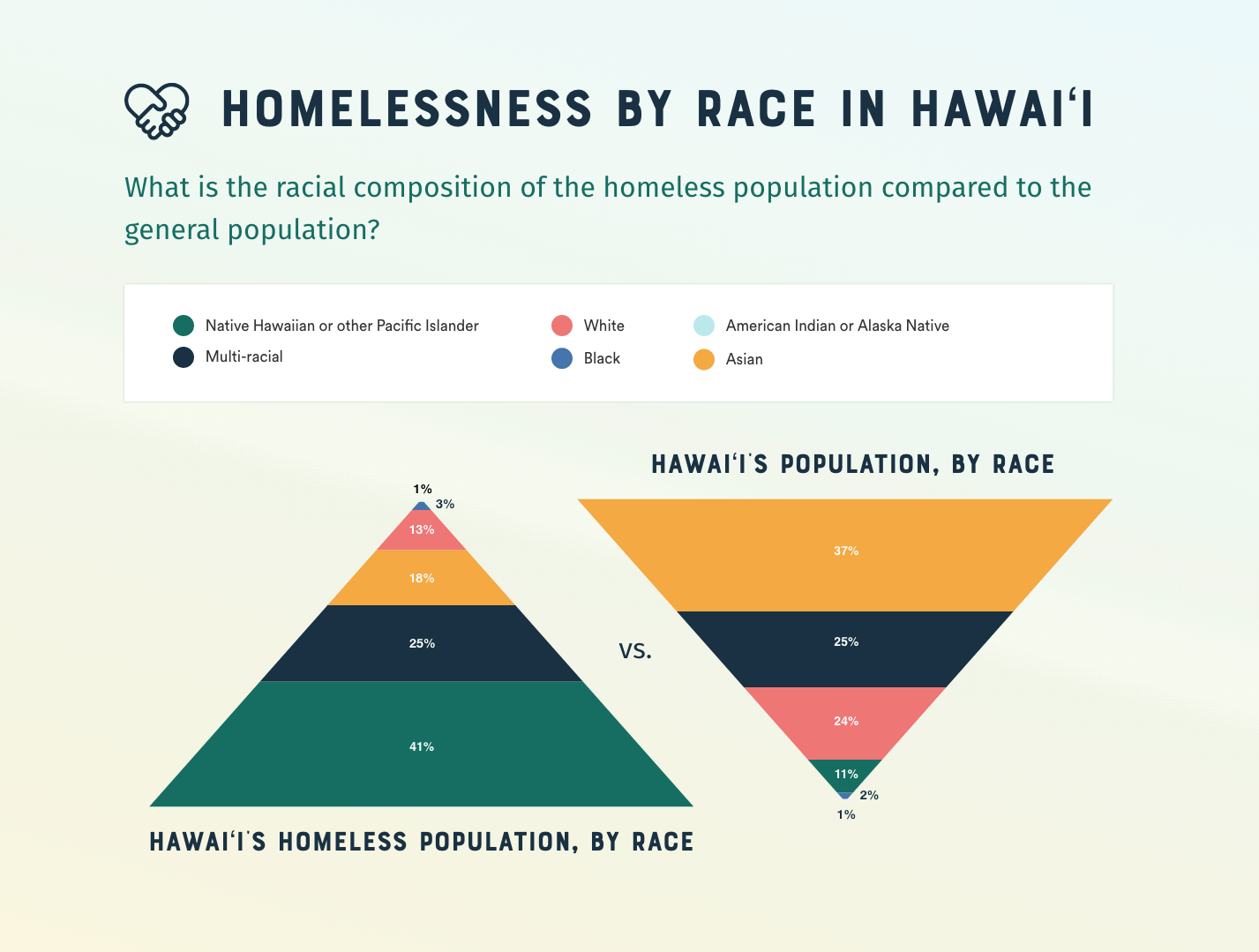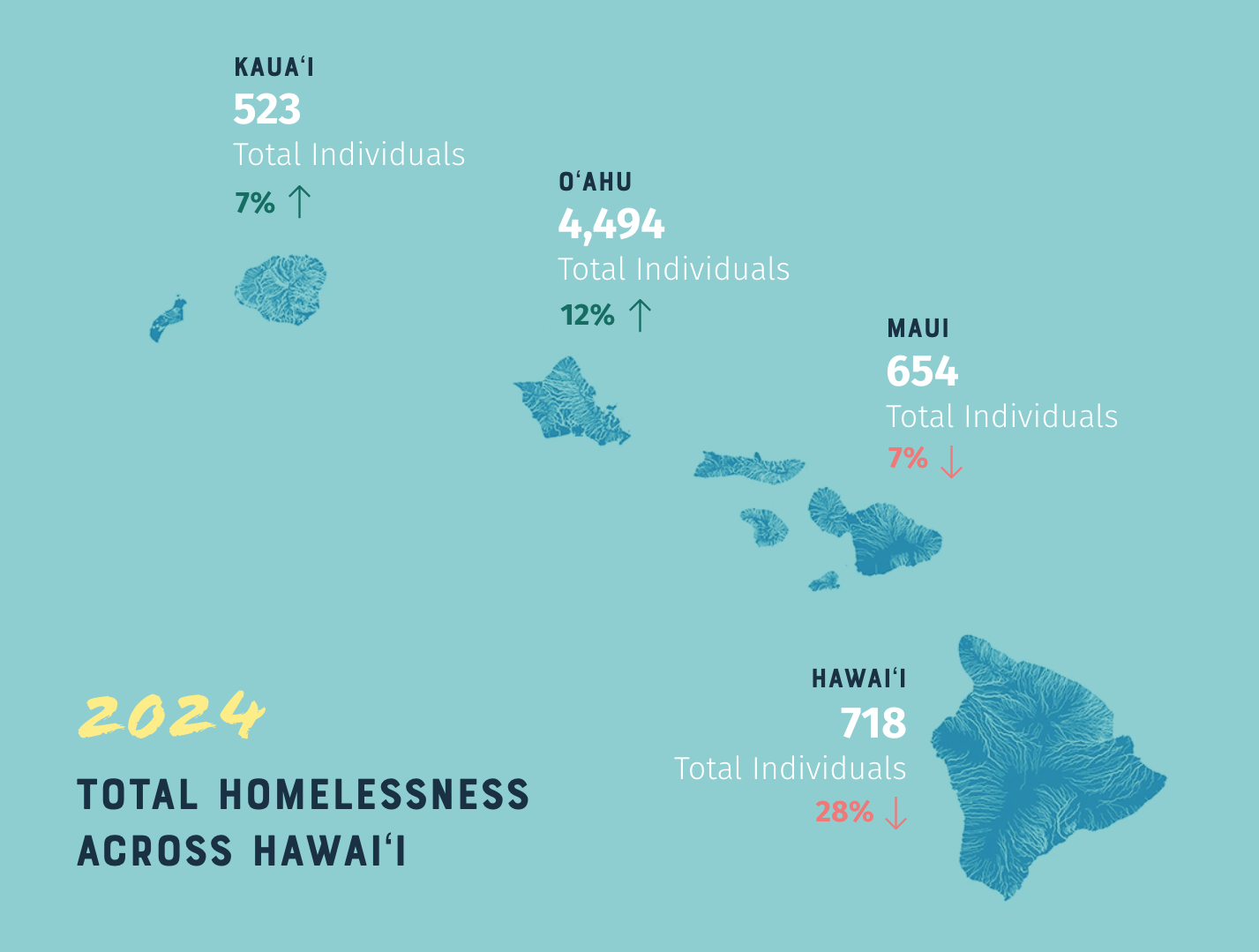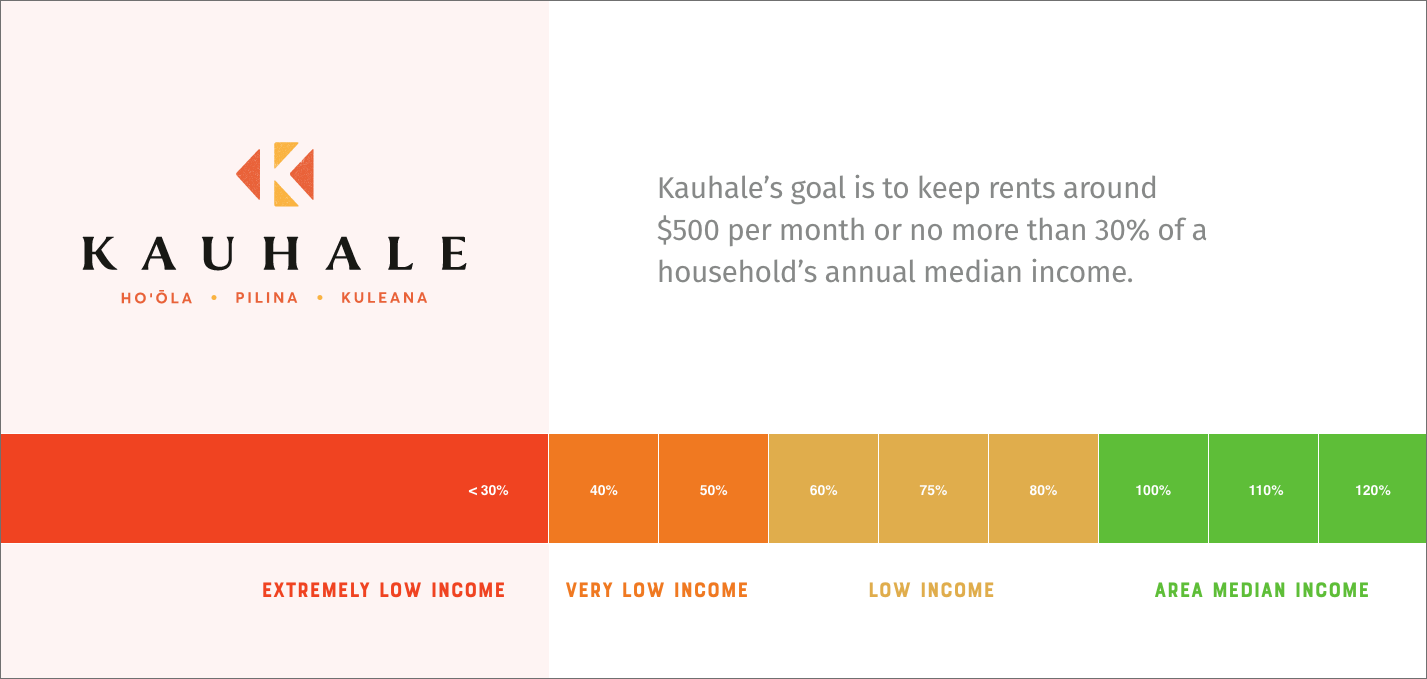While Hawai‘i is a tropical paradise for many, the reality of living here reveals one of the highest rates of homelessness per capita in the United States. The underlying causes of homelessness—mental health issues, substance use disorders, family discord, and financial distress—are not unique to Hawai‘i. What is unique to Hawai‘i, however, is our high cost of living.
In this article, we explore how the rising cost of living correlates with the increasing homeless population in Hawai‘i. By understanding the demographics, risk factors, and impacts of homelessness, as well as potential solutions, we can better address this complex issue.
The annual Point in Time Count (PITC), a federally mandated census, is one of the most valuable resources for understanding homeless demographics. Partners in Care - O‘ahu Continuum of Care recently released their 2024 PITC on O‘ahu, along with Bridging the Gap and Ka Mana O Na Helu (KMNH), who released the PITC for Hawai‘i Island, Maui, and Kauaʻi.
The 2024 PITC results for O‘ahu are sobering. This year marks the largest increase in unsheltered individuals on O‘ahu since 2010, with 4,494 people experiencing homelessness, 62% of whom are unsheltered. This represents a 12% overall increase in homelessness and a 17% increase in the unsheltered count from the previous year.
Homeless individuals span various age groups, from young children to the elderly. A significant portion of the homeless population consists of single adults, many between 25 to 54 years old. Ethnically, Native Hawaiians and Pacific Islanders are disproportionately represented among the homeless due to historical and systemic inequities, including land dispossession and economic marginalization.

Financial and employment issues are the most common reasons for homelessness, with an inability to pay rent being the leading cause. Individuals and families living paycheck to paycheck are particularly vulnerable to homelessness due to sudden financial setbacks, such as job loss, medical emergencies, or rent increases. Other at-risk groups include those with mental health issues, substance abuse problems, domestic violence survivors, veterans, and LGBTQ+ individuals, who face various systemic barriers and discrimination.
On neighbor islands, unsheltered homelessness decreased significantly in two of the three rural counties, with Hawai‘i down 28% and Maui down 7%. However, Kaua‘i saw an 8% increase in unsheltered homelessness, rising from 430 to 464 persons in 2024. Maui’s sheltered homelessness increased by 16% year-over-year, greatly impacted by the Lahaina wildfires. These fires destroyed homes and infrastructure, displacing many residents and exacerbating the already high demand for housing. The destruction also led to higher insurance premiums and construction costs, making rebuilding and recovery even more challenging.

The fires have a ripple effect on the cost of living, as the loss of homes and businesses disrupts local economies and reduces the availability of affordable housing. This situation underscores the importance of disaster preparedness and resilience in mitigating the impacts of such events on homelessness and the overall cost of living.
According to the Missouri Economic Research and Information Center, Hawai‘i was the most expensive state to live in the United States during the first quarter of 2024. With a cost of living index score of 186.2, it surpassed California, the second most expensive state, by nearly 40 points. The index score considers various categories, including housing, groceries, utilities, transportation, health, and more.

Hawai‘i’s housing market is one of the most expensive in the nation, making it challenging for low-income individuals and families to afford stable housing. Housing costs are three times the national average, with the median sales price for single-family homes, condos, and townhomes at $754,800 in May 2024. Additionally, according to various sources, including Zippia, Hawai‘i Vacation Guide, and AreaVibes, groceries on O‘ahu, Maui, Kaua‘i, and the Big Island of Hawai‘i cost over 50% above the national average due to shipping costs.
The cost of housing is a critical factor in Hawai‘i’s homelessness crisis. High rental prices and a limited supply of affordable housing create a precarious situation for many residents. The median rental cost for a single-family home is currently $3,000. The “rent squeeze” phenomenon, where rental prices increase faster than wages, is particularly acute in Hawai‘i. According to a 2023 article by Hawai‘iBusiness, 58% of renter households were cost-burdened in 2021, spending more than 30% of their incomes on rent. This financial pressure forces many individuals and families to live in overcrowded conditions and work multiple jobs or face eviction and homelessness.
The living wage gap, the difference between residents' actual income and the income needed to afford basic living expenses, is another major issue. In Hawai‘i, the living wage far exceeds the minimum wage, making it challenging for low-income workers to maintain stable housing. This gap underscores the need for more affordable housing options and policies that support wage growth. While the minimum wage is $14 per hour, the living wage in Honolulu is $26.90 per hour for a single adult with no children. This wage increases depending on the number of adults and children in the household. For example, the living wage for a single adult with one child is $52.89 per hour, while the living wage for a single adult with two children is a staggering $66.63 per hour.
One promising solution to Hawai‘i’s homelessness crisis is the development of Kauhale. Kauhale, meaning “village” in Hawaiian, are tiny home villages designed to provide permanent housing for the homeless. These communities target individuals earning 30% of the Area Median Income (AMI), a demographic often overlooked in traditional housing programs.

“In my role, I am often asked why Kauhale will be more successful than other solutions to address homelessness. The answer is simple. The trauma-informed design and deeply affordable development of Kauhale make them uniquely suited to help people transition from life on the streets,” says Kimo Carvalho, Executive Director of HomeAid Hawai‘i.
Kauhale offers more than just homes—it provides a sense of community and belonging, essential for addressing the social and psychological aspects of homelessness. Residents have access to various support services, including healthcare, counseling, and job training, helping them transition to stable and independent living.
By partnering with the State, HomeAid Hawai‘i has exciting plans to develop 12 Kauhale by the end of Governor’s first term. This initiative represents a significant step towards providing permanent housing solutions for those experiencing or at risk of homelessness across the State. The deeply affordable nature of Kauhale ensures that individuals with limited financial means can transition from the streets into secure, stable homes.
As Governor Josh Green said, “Kauhale represents a compassionate and pragmatic approach to tackling homelessness in Hawai‘i. By providing affordable, community-oriented housing, we are not only addressing immediate needs but also fostering long-term stability and well-being for our most vulnerable residents.”